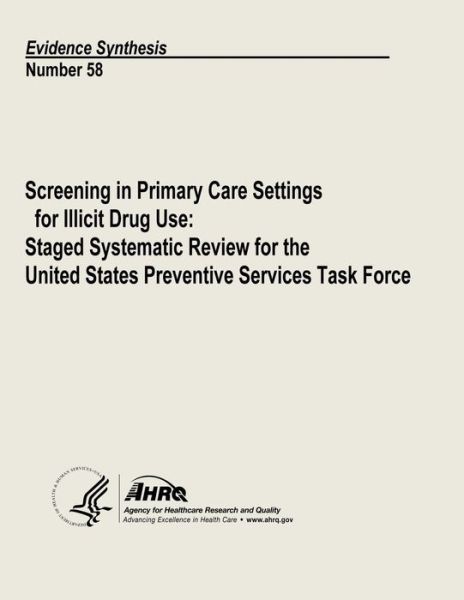
Powiedz znajomym o tym przedmiocie:
Genetic Risk Assessment and Brca Mutation Testing for Breast and Ovarian Cancer Susceptibility: Evidence Synthesis: Evidence Synthesis Number 37
U S Department of Heal Human Services
Genetic Risk Assessment and Brca Mutation Testing for Breast and Ovarian Cancer Susceptibility: Evidence Synthesis: Evidence Synthesis Number 37
U S Department of Heal Human Services
Publisher Marketing: Screening for inherited breast and ovarian cancer susceptibility is a two-step process that includes an assessment of risk for clinically significant BRCA mutations followed by genetic testing of high-risk individuals. The evidence synthesis describes the strengths and limits of evidence about the effectiveness of selecting, testing, and managing patients in the course of screening in the primary care setting. Its objective is to determine the balance of benefits and adverse effects of screening based on available evidence. The target population includes adult women without preexisting breast or ovarian cancer presenting for routine care in the U. S. The evidence synthesis emphasizes the patient's perspective in the choice of tests, interventions, outcome measures, and potential adverse effects and focuses on those that are available and easily interpreted in a clinical context. It also considers the generalizability of efficacy studies and interprets the use of the tests and interventions in community-based populations seeking primary health care. Breast cancer is the second most common cancer in women in the U. S. after nonmelanoma skin cancer, and is the second leading cause of cancer death after lung cancer. In 2003, there were an estimated 211,300 new cases and 39,800 deaths from breast cancer. The incidence of breast cancer increases with age2 and is associated with several risk factors, although the majority of breast cancer occurs in women without known major risk factors. Ovarian cancer is the fifth leading cause of cancer death among women in the U. S., accounting for an estimated 25,400 new cases and 14,300 deaths in 2003. Risk for ovarian cancer also increases with age, peaking after age 80. The 5-year relative survival rate for all stages of ovarian cancer in the U. S. is 50%, but may improve to 95% for women whose disease is detected and treated in early stages. However, up to 75% of women with ovarian cancer have non-localized disease at the time of diagnosis because early stages are often asymptomatic. Five-year relative survival rates for women with regional and distant disease drop to 79% and 28%, respectively. Key questions addressed include: Key Question 1. Does risk assessment and BRCA mutation testing lead to a reduction in the incidence of breast and ovarian cancer and cause-specific and/or all cause mortality? Key Question 2. What are the ethical, legal, and social implications of genetic screening for breast and ovarian cancer susceptibility? Key Question 3a. How well does risk assessment for cancer susceptibility by a clinician in a primary care setting select candidates for BRCA mutation testing? Key Question 3b. What are the benefits of genetic counseling prior to testing? Key Question 3c. Among women with family histories predicting either an average, moderate, or high risk for a deleterious mutation, how well does BRCA mutation testing predict risk of breast and ovarian cancer? Key Question 4. What are the adverse effects of risk assessment, counseling, and testing? Key Question 5. How well do interventions reduce the incidence and mortality of breast and ovarian cancer in women identified as high-risk by history, positive genetic test results, or both? Key Question 6. What are the adverse effects of interventions?
| Media | Książki Paperback Book (Książka z miękką okładką i klejonym grzbietem) |
| Wydane | 26 czerwca 2013 |
| ISBN13 | 9781490543253 |
| Wydawcy | Createspace |
| Strony | 322 |
| Wymiary | 216 × 280 × 17 mm · 748 g |
Więcej od U S Department of Heal Human Services
Zobacz wszystko od U S Department of Heal Human Services ( np. Paperback Book )

































